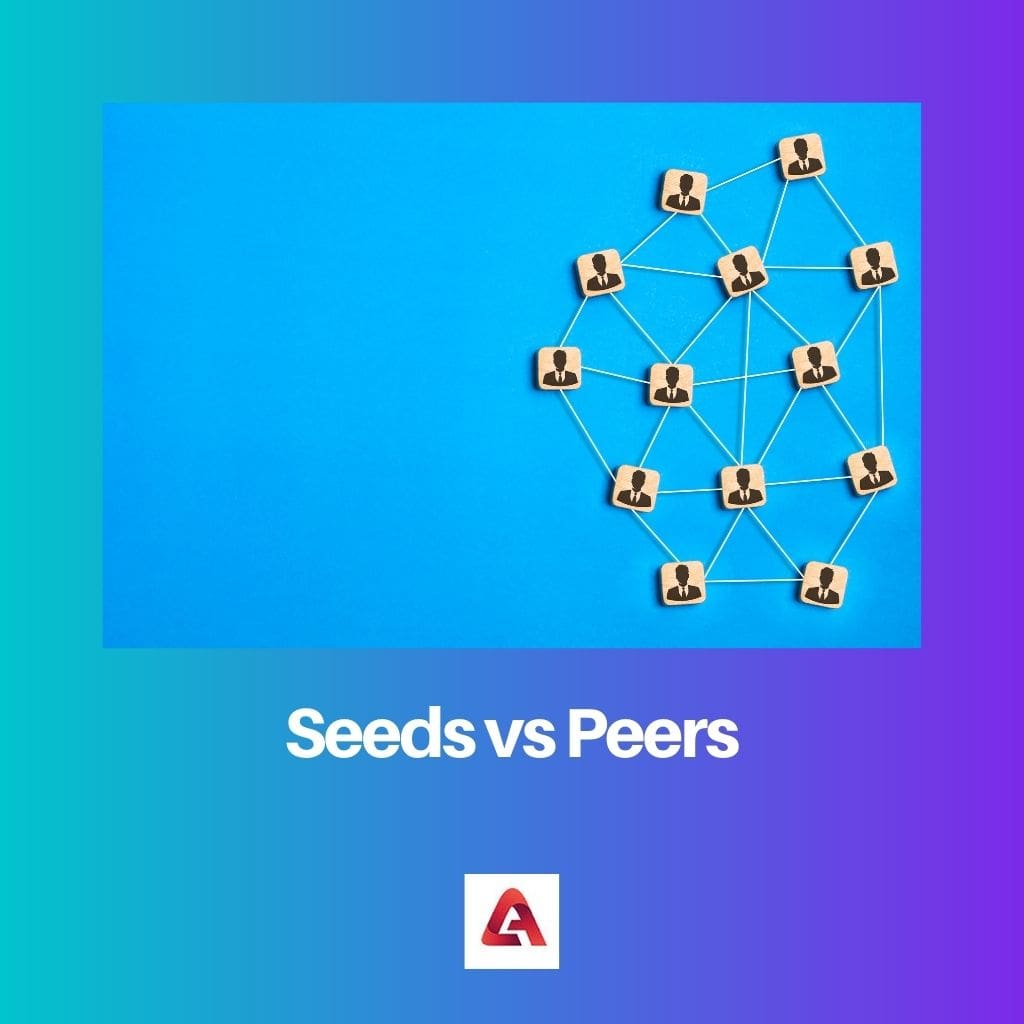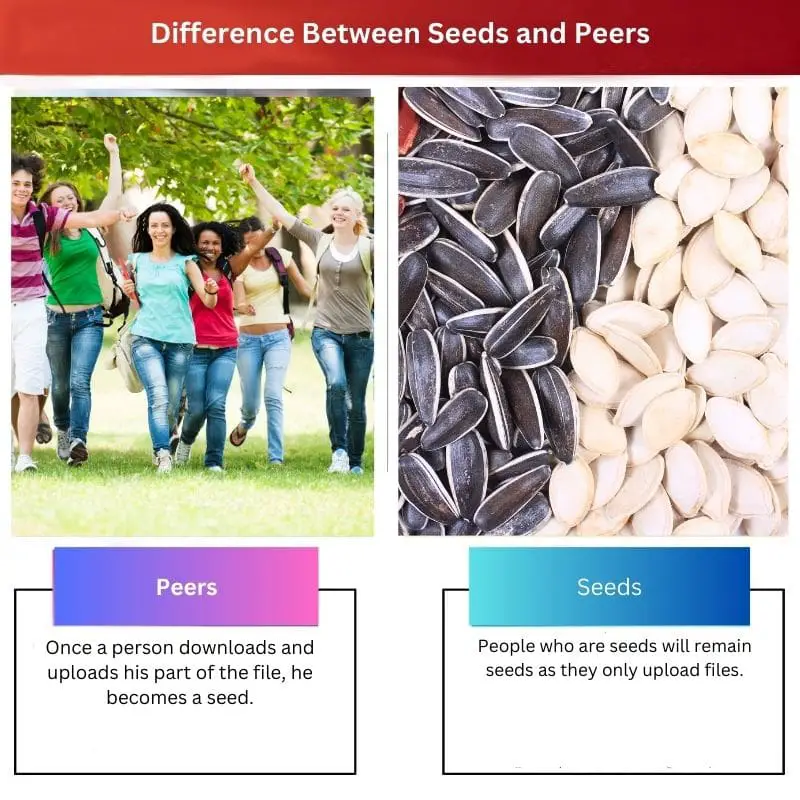Torrent, in the past years, has become a renowned file-sharing network. It is the newest and the best among all the other file-sharing networks.
With torrents, there are no centralized servers from which the files can only be downloaded. To understand better, one should know what a torrent file is. A torrent file is a computer file containing metadata about the files and folders to be distributed.
Key Takeaways
- Seeds are users in a peer-to-peer (P2P) network who have a complete file copy and are actively sharing it with others.
- Peers are users in a P2P network downloading a file and may also share parts of the file they have already downloaded.
- Both seeds and peers are integral to the functioning of P2P networks, with seeds ensuring file availability and peers contributing to the distribution of the file.
Seeds vs Peers
Seeds are users who have a complete copy of a file that is being shared. When a user downloads a file from a seed, they are downloading the entire file from a single source. Peers is a term used to describe users who are downloading or sharing a file but do not have a complete copy of the file.

Seeds are referred to those currently active torrent clients that already have the complete file and are sharing the file with other peers.
Peers are referred to those torrent clients with bits or parts of the file. They share their parts of the file and download the parts they don’t have of that file.
Initially, when a torrent is made, only one seeder has the full file. They upload it on the torrent for others to download. Also, the number of seeds and peers are directly correlated.
Comparison Table
| Parameters of Comparison | Seeds | Peers |
|---|---|---|
| Definition | Seeds are those people who have the whole file and upload those files. | Peers are the people who both download the parts of the file they don’t have and upload the parts of the file they have. |
| Downloading speed of a file | If a more significant number of seeds are there, a file’s downloading speed will be faster. | If a more significant number of peers are present, the downloading speed will be less. |
| Correlation | People who are seeds will remain seeds as they only upload files. | Once a person downloads and uploads his part of the file, he becomes a seed. |
| Data of a file | Seeds have the full file. | Peers only have parts of the file or none of the files. |
| Uploading the file | Seeds upload the whole file in parts for peers to download. | Peers upload the parts of the files they have and download the other parts. |
What is Seeds?
Seeds are referred to those currently active torrent clients who already have the complete file and are sharing the file with other peers. Such people or seeds do not download any part of the file.
When a torrent is made, only one seeder has the whole file, and that seeder then uploads it in parts for the other peers to download.
Once a peer downloads the parts of the file he does not have and uploads the parts of the file he has; he will become a seed.
The number of seeds and peers is also related to the speed of downloading the file. If the number of seeds is more significant, the downloading speed will be higher as the peers will have more sources to download the file from.
Also, if a person is a peer or a seeder does not remain fixed. A peer, after downloading the file, will automatically become a seeder.
Seeding in the sharing community is greatly encouraged. More seeders will contribute to the fast downloading speed for other people and make everything a lot faster for everyone else on the platform.

What is Peers?
Peers are referred to those torrent clients with bits or parts of the file. They share their parts of the file and download the parts they don’t have of that file.
They may have parts of the file or may have none of the details of the file. The number of peers significantly affect the speed of downloading a file.
If the number of peers is more than that of the seeds, then the downloading speed will decrease as more people will compete for the same bandwidth.
The peers can also offset the download bandwidth they consume as although they are downloading the file, they also upload the parts of the file they already have, and other people can download these parts.
This alleviates the consumption of the bandwidth that is provided by the seeders.

Main Differences Between Seeds and Peers
- Seeds are referred to those people who upload files, whereas peers are those who both download and upload files.
- Seeds upload the full files for the peers, whereas peers only have parts of the files or none.
- Seeds will remain seeds as they upload the full files, whereas a peer can become a seed as soon as the peer uploads his parts of the file.
- The greater number of seeds will contribute to a faster speed of downloading the file, whereas a more significant number of peers will mean that the speed of downloading will be less.
- Seeds upload the whole files, while peers only upload the parts of the files they have and download the other parts of the file they don’t have.

- https://ieeexplore.ieee.org/abstract/document/4062573/
- https://www.usenix.org/legacy/events/imc05/tech/full_papers/guo/guo.pdf

The role of peers is integral to the functioning of P2P networks, yet their presence can also hinder download speeds. It’s a complex balance to manage.
The peer-to-peer sharing concept relies heavily on the participation of both seeds and peers. This article effectively highlights their roles in file distribution.
This is a brilliant explanation of how torrent networks function. Understanding the difference between seeds and peers is crucial for anyone who wants to use torrents.
The concept of seeding and peer activity is well-explained. However, the impact of peers on download speed could potentially complicate the file-sharing process.
I find it ironic that the speed of downloading a file can either increase or decrease depending on the ratio of seeds to peers. The dynamics of P2P networks are fascinating.
I find it rather surprising that there are still centralized servers for most file-sharing networks. The decentralized nature of torrent networks makes them far superior.
The distinction between seeds and peers is clear, and the information provided about their significance in file sharing is both enlightening and thought-provoking.
The explanation of uploading and downloading processes for both seeds and peers is very well articulated. This will help many people use torrents more efficiently.
The emphasis on the importance of seeding in the sharing community is commendable. It’s crucial to encourage more users to become seeders on torrent networks.
I appreciate the detailed comparison between seeds and peers. It’s enlightening to know the factors that influence download speeds on P2P networks.